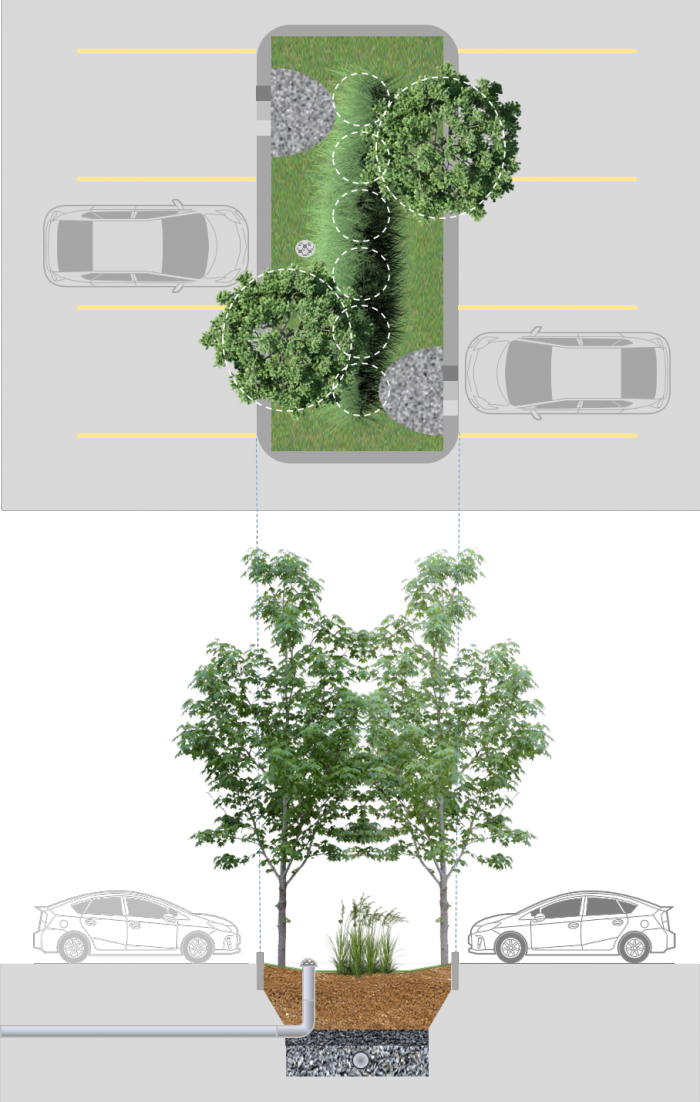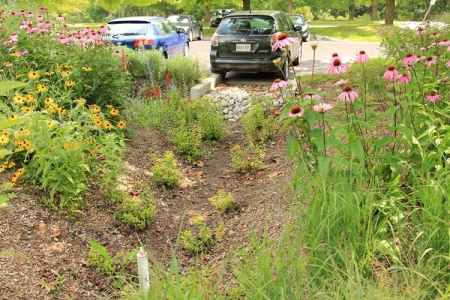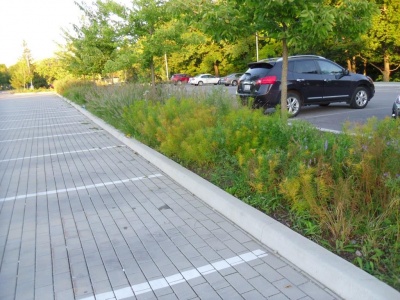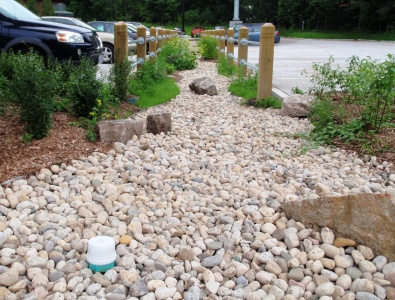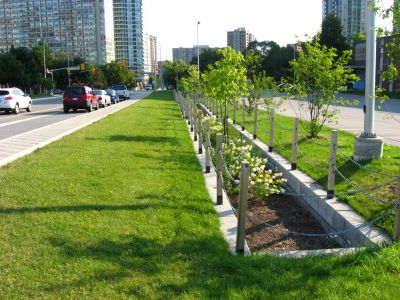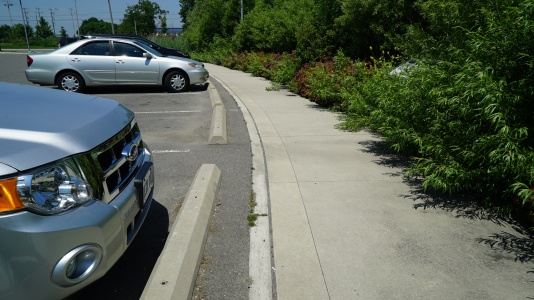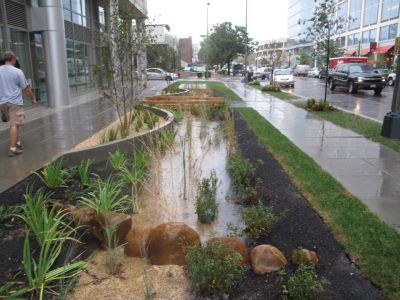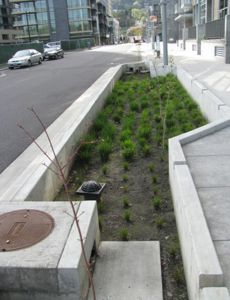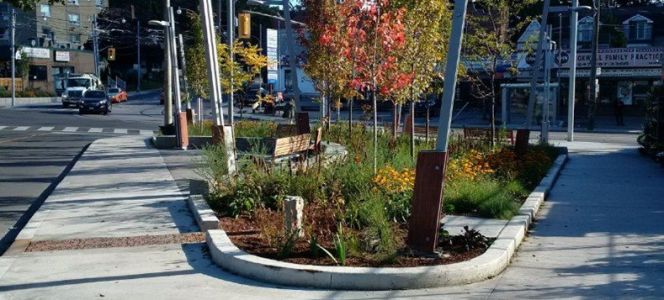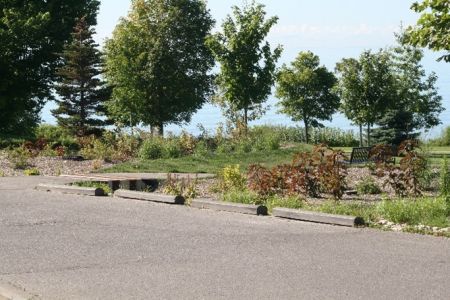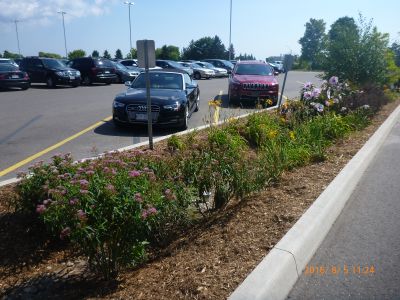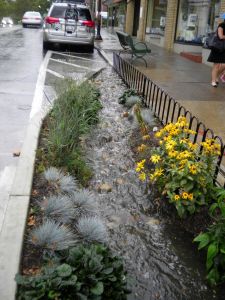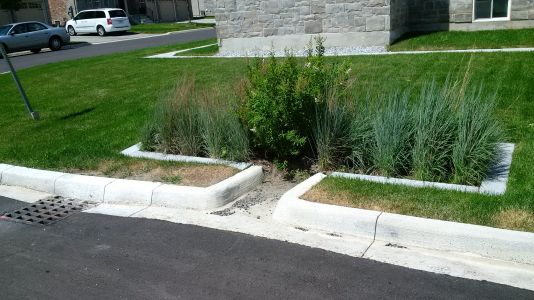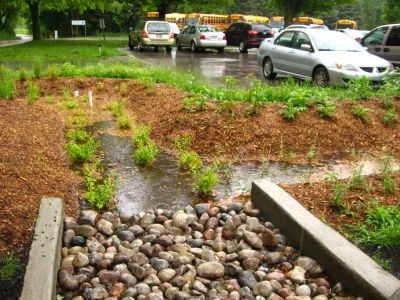Difference between revisions of "Bioretention: Parking lots"
Jenny Hill (talk | contribs) m |
Jenny Hill (talk | contribs) m |
||
| Line 15: | Line 15: | ||
poly 345 1250 389 1258 390 1327 367 1327 344 1284 [[Bioretention: Filter media]] | poly 345 1250 389 1258 390 1327 367 1327 344 1284 [[Bioretention: Filter media]] | ||
rect 406 1335 555 1355 [[Choking layer]] | rect 406 1335 555 1355 [[Choking layer]] | ||
| − | rect 369 1356 457 1395 [[Reservoir | + | rect 369 1356 457 1395 [[Reservoir aggregate]] |
| − | rect 482 1357 556 1394 [[Reservoir | + | rect 482 1357 556 1394 [[Reservoir aggregate]] |
circle 468 1375 12 [[Underdrain]] | circle 468 1375 12 [[Underdrain]] | ||
</imagemap> | </imagemap> | ||
| − | + | On commercial, industrial and multi-unit developments, a popular choice is to integrate bioretention into parking lot landscaped areas. These distributed cells typically accept sheet flow through multiple curb cuts, have shallow depression storage ≤ 100 mm, and a total area of 5 -200 m<sup>2</sup>. Although many parking lot schemes include long linear bioretention cells (≥ 0.6 m wide), infiltration is optimized by having a level grade and a level base, unlike a [[Bioswales|bioswale]]. | |
| − | |||
==Gallery== | ==Gallery== | ||
{{:Bioretention cells: Gallery}} | {{:Bioretention cells: Gallery}} | ||
| − | |||
==See Also== | ==See Also== | ||
Revision as of 00:33, 9 March 2018
On commercial, industrial and multi-unit developments, a popular choice is to integrate bioretention into parking lot landscaped areas. These distributed cells typically accept sheet flow through multiple curb cuts, have shallow depression storage ≤ 100 mm, and a total area of 5 -200 m2. Although many parking lot schemes include long linear bioretention cells (≥ 0.6 m wide), infiltration is optimized by having a level grade and a level base, unlike a bioswale.
Gallery[edit]
Parking lot bioretention with surface ponding well in foreground, Kortright Centre, Vaughan, ON. Read about the performance of this practice in the technical brief.
Parking lot bioretention sharing underground reservoir with adjacent permeable paving, Edwards Gardens, Toronto, ON. Read a case study about it here.
Parking lot bioretention with decorative stone for erosion control, and perforated pipe access standpipe in foreground, Earth Rangers Centre, Vaughan, ON. Read about the performance of this practice in the technical brief.
The sunken curb holds the edge of the asphalt pavement and lets water freely flow to the bioretention cell beside the 7sigma parking lot in Minneapolis, MN (USA)
Photo credit:Brian AshBioretention cells on Elm Drive, Mississauga, ON, with vertical sides and hardscape perimeter receive road runoff via leader pipes from road catch basin inlets. Read about the stormwater system at this site in the performance assessment report.
Bioretention bump out in a dense urban setting receiving runoff via side inlet catch basin and curb openings on the walkway side of the installation.
Fairford Parkette featuring a bioretention cell retrofitted into a roadway in downtown Toronto, ON. Read a case study about it here.
Parking lot bioretention cell at IMAX corporate headquarters in Mississauga, ON. Read about the IMAX stormwater system in the performance assessment report
Bioretention cell receiving road runoff in the Wychwood neighbourhood of Brampton, ON. The nearby catch basin conveys overflows during major rain events. Read about the stormwater system in this community in the performance assessment report.
